Transcranial Magnetic Stimulation (TMS) is a revolutionary treatment for individuals suffering from major depressive disorder (MDD). This non-invasive procedure leverages magnetic fields to stimulate nerve cells in the brain, aiming to alleviate symptoms of depression. With an increasing number of patients not responding to traditional treatments, TMS offers a promising alternative.
What is Transcranial Magnetic Stimulation (TMS)?
Transcranial Magnetic Stimulation (TMS) is a technique that uses magnetic pulses to target specific areas of the brain associated with mood regulation. Developed in the 1980s, TMS has evolved into a widely accepted method for treating various neurological and psychiatric conditions, particularly major depressive disorder.
The procedure involves placing an electromagnetic coil against the patient’s scalp. The device generates magnetic fields that stimulate nerve cells in the brain, specifically the prefrontal cortex, which is often underactive in individuals with depression. This stimulation aims to restore regular brain activity and improve mood.
Mechanisms of TMS in Treating Major Depressive Disorder
The primary mechanism behind TMS is its ability to modulate neural activity in the brain’s prefrontal cortex. This area is crucial for mood regulation and is typically less active in people with depression. Using magnetic pulses, TMS can increase the activity in these neural circuits, thereby reducing depressive symptoms.
Scientific research has shown that TMS can significantly impact the brain’s neuroplasticity—the brain’s ability to adapt and change. This is particularly beneficial for individuals with treatment-resistant depression, as TMS can help rewire the brain’s pathways, promoting healthier brain function.
Procedure and What to Expect During a TMS Session

A typical TMS session involves the following steps:
- Preparation: The patient sits in a comfortable chair, and earplugs are provided to reduce the noise from the magnetic pulses.
- Placement of the Coil: An electromagnetic coil is placed against the patient’s scalp, usually on the left side of the prefrontal cortex.
- Stimulation: The TMS machine sends magnetic pulses through the coil to stimulate the targeted brain region. Each pulse lasts only a few milliseconds.
- Duration: Each session typically lasts about 30-40 minutes. Patients usually undergo daily sessions for several weeks.
Patients can resume normal activities immediately after each session, as TMS does not require anesthesia and has minimal recovery time.
Effectiveness of TMS in Treating Major Depressive Disorder
Clinical studies have consistently demonstrated the effectiveness of TMS in reducing depressive symptoms in patients with MDD. Research indicates that approximately 50-60% of patients experience significant improvements, and about one-third achieve complete remission. This success rate highlights TMS as a promising treatment alternative.
The mechanism of TMS involves using magnetic fields to stimulate nerve cells in the brain, particularly the areas associated with mood regulation. By directly targeting brain activity, TMS can alter neural pathways and improve communication between different parts of the brain. This direct approach sets TMS apart from other treatments that often rely on systemic changes throughout the body.
Compared to medication, TMS offers several advantages. Antidepressant medications often come with side effects such as weight gain, sexual dysfunction, and gastrointestinal issues. Conversely, TMS is generally well-tolerated with fewer and less severe side effects, mainly limited to scalp discomfort or mild headaches. This makes TMS a viable option for individuals who cannot tolerate the side effects of medications.
In addition, TMS does not require the patient to commit to long-term drug use. Many patients undergoing TMS report sustained improvements even after the treatment course has ended, reducing the need for continuous intervention. This aspect is particularly appealing for those looking for a more permanent solution without the daily reminder of taking a pill.
Studies also suggest that TMS can be beneficial for other conditions commonly comorbid with MDD, such as anxiety disorders and post-traumatic stress disorder (PTSD). This broadened scope of application further underscores the versatility and effectiveness of TMS.
Side Effects and Safety of TMS
One of the advantages of TMS is its favorable safety profile. Common side effects are generally mild and temporary. They include:
- Mild headache
- Scalp discomfort at the stimulation site
- Tingling or twitching of facial muscles
- Lightheadedness
These side effects typically subside after a few sessions as the body adjusts to the treatment. In rare cases, TMS can cause more severe side effects, such as seizures, but this is highly uncommon.

Long-term safety studies have shown that TMS is well-tolerated over extended periods, with no significant adverse effects on cognitive function or overall brain health. The FDA has approved this treatment to treat Major Depressive Disorder as well as Obsessive Compulsive Disorder, migraines, and smoking cessation. However, TMS is not recommended for individuals with certain conditions, such as a history of seizures or metal implants in the head.
Who is a Candidate for TMS?
TMS is particularly beneficial for individuals with major depressive disorder who have not responded to traditional treatments, such as medications and psychotherapy. The typical candidate for TMS is someone who:
- Has a diagnosis of major depressive disorder
- Has not achieved satisfactory results from at least one antidepressant medication
- Is not currently experiencing seizures
TMS is also being explored as a treatment option for other conditions, including obsessive-compulsive disorder (OCD), anxiety disorders, and post-traumatic stress disorder (PTSD).
Benefits of TMS over Traditional Treatments
TMS offers several advantages over conventional treatments for depression:
- Non-Invasive: Unlike electroconvulsive therapy (ECT), TMS does not require anesthesia or induce seizures, making it a safer option for many patients.
- Few Side Effects: TMS has a lower risk of side effects compared to antidepressant medications, which can cause weight gain, sexual dysfunction, and other systemic effects.
- Rapid Results: Many patients notice improvements in their symptoms within a few weeks of starting TMS, whereas medications can take several weeks or months to take full effect.
- Targeted Treatment: TMS directly stimulates the brain regions involved in mood regulation, offering a more targeted approach than systemic treatments like medications.
The Future of TMS in Treating MDD
TMS represents a significant advancement in the treatment of major depressive disorder, offering hope to individuals who have struggled with traditional therapies. Its non-invasive nature, strong safety profile, and practical outcomes make it an attractive option for many patients.
Ongoing research continues to explore the full potential of TMS, including its application to other psychiatric and neurological conditions. As our understanding of the brain and its functioning deepens, TMS is poised to play an increasingly important role in mental health treatment.
For those suffering from treatment-resistant depression, TMS provides a chance for improved mood and a better quality of life. The procedure’s safety profile, minimal side effects, and targeted approach make it an attractive option for many patients.
At Ascend Health Center, we are dedicated to providing cutting-edge treatments to help our patients achieve better mental health. If you or a loved one is struggling with depression and conventional therapies have not been effective, TMS might be the right fit for you. Contact Ascend Health Center today to schedule a consultation and explore how TMS can help you regain control of your life and mental well-being.




















